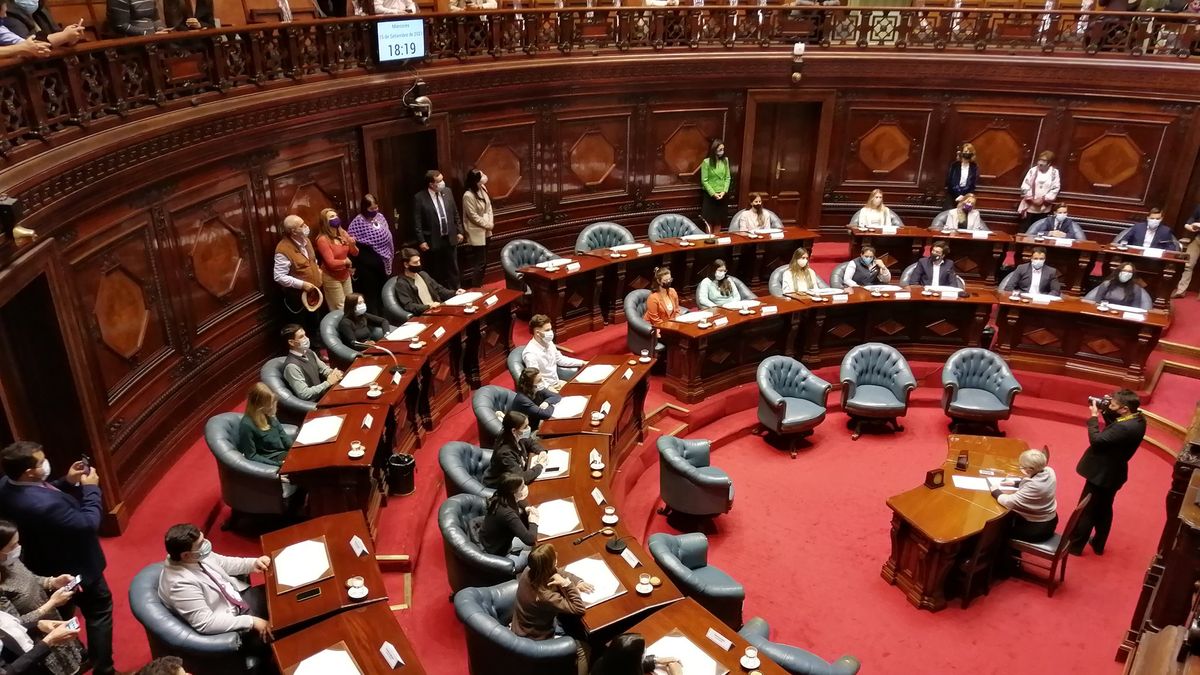The government of Santa Fe sent the project to the local Legislature Pension Reform Law of the Public Employees’ Retirement Fund, which, among other aspects, It maintains the retirement ages for women and men; it defines that those who earn more contribute more, and also proposes a Solidarity Contribution. It also makes changes to the regimes for teachers and police officers.
The brand new text entered the Senate and “It seeks to implement, through a supportive, fair and efficient system, a new retirement system for all state agents, and in this way reduce the organization’s deficit by between 20% and 30%, which is projected for 2024 to be 430 billion pesos,” according to data provided by the Santa Fe administration.
What are the main points of the Santa Fe pension reform?
Among its main points, the initiative proposes the “declaration of the Emergency of the Pension System of public employees and officials of the Province of Santa Fe, and its modifications for Police Personnel, Penitentiary Personnel, the Provincial Autonomous Institute of Penitentiary Industries (Iapip) and the Optional Teaching System, for a period of two years, extendable for two more years.”
Article 2 establishes a Solidarity Contribution that the beneficiaries of the Fund (current or future) must be made on the total benefit they receive, during the period of validity of the declared emergency, with discounts ranging from 2% to 6% according to the benefit received.
Retired Banks
The government of Santa Fe aims to reduce the deficit of the provincial pension fund by between 20% and 30%.
Image: Telam
Those who receive more than one benefit from the Fund will make the solidarity contribution on the sum of both benefits, while those who receive benefits less than the two minimum pensions will not make solidarity contributions.
Regarding active personnel, those who hold a political or cabinet leadership position and who have joined from December 11, 2023 onwards will make the solidarity contribution for 36 months and for an amount equivalent to 2.77% of their salary.
Among the main points of this section is that active personnel should increase their contribution in a staggered manner: currently, everyone contributes 14%, but the project proposes that contributions be increased based on a new calculation that goes from 15.5% to 21% depending on the income received, meaning that the more you earn, the more you contribute, and includes all workers and officials of the three branches of government.
A cap on pensioners’ pensions is also implemented: currently there are beneficiaries who receive an equivalent of up to 32 minimum pensions, but with this project a cap is applied by which No one will receive more than 20 minimum pensions. And the current retirement ages will remain the same: 60 for women and 65 for men, plus 30 years of service.
How the teaching and police regimes are left
The Santa Fe administration also announced how the teaching and police regimes will be.
Teachers:
- Teachers at all levels and modalities of the educational system will be able to access retirement.are 60 years of age and have 30 years of teaching experience in public or private establishments incorporated into official non-university education.
- In the case of teaching members who can prove 30 years of service provided entirely in the classroom in public or private establishments incorporated into official education, at the initial, primary and secondary levels, the latter with a minimum of 30 teaching hours and/or have held management or supervisory positions in the aforementioned establishments and are 57 years of age, may also obtain the benefit.
Police:
- The changes also affect the Police Regime, which includes the personnel of the Provincial Police, the General Directorate of the Penitentiary Service, and the Iapip.
- In this case, It is proposed that contributions will be 17% to 20% of their remuneration depending on the position they hold and the institution to which they belong.
Transitional provisions
The reform project also establishes transitional provisions, some of which establish that retirement procedures in progress at the time of publication of the law in the Official Gazette will be analyzed by the Fund and, in the event of obtaining a favorable opinion, they will be able to access the benefit in accordance with the previous regime; Meanwhile, those procedures that will have a favorable opinion and were paralyzed by the beneficiary’s will for more than 6 months, will access the benefit with the legal regime in force at the time of cessation of the provision of services.
Another of the highlights of the reform establishes that, in the event that the National State increases the ages for accessing retirement benefits, the provincial Executive Branch is authorized to increase them until reaching the same ages, having to determine in turn the gradualness of its implementation.
Source: Ambito
I am Pierce Boyd, a driven and ambitious professional working in the news industry. I have been writing for 24 Hours Worlds for over five years, specializing in sports section coverage. During my tenure at the publication, I have built an impressive portfolio of articles that has earned me a reputation as an experienced journalist and content creator.




